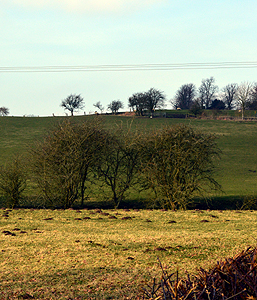The Stonehouse Hockliffe

View towards the site of The Stonehouse from Goose Green February 2013
The Stonehouse was a sixteenth century farm house which was related to Hockliffe Manor although there is some confusion over whether it relates solely to the second manorial property to both. Under the terms of an indenture dated 24th May 1589 William Jervis of Great Peatling [Leicestershire] and his wife Elizabeth, one of the daughters and co-heiresses of the late William Sheppard of Hockliffe, agreed with Ralph Sheppard of Hockliffe and his brother Thomas Sheppard of Maulden to levy a final concord (agreement) at the Queen's Court at Westminster. This agreement related firstly to the "Stonehowse" together with 85 acres in Hockliffe and 3 acres in the field of Eggington belonging to that property, which was held as copyhold land by Thomas Sheppard (the father of Ralph and Thomas) and the late William Sheppard, having formerly been held by John Broughton, and secondly to the Falcon in Hockliffe with 2 acres of pasture in Battlesden. It was arranged that Ralph Sheppard was to have his dwelling house, recently built on land belonging to the Stonehouse, a small field which had recently been made into a garden or orchard, and some meadow land belonging to the Stonehouse; Thomas Sheppard was to have the Stonehouse with its remaining land and the Falcon; and William and Elizabeth Jervis were to guarantee their right to the properties [T7/1].
As the second Hockliffe Manor was held by the Sheppard family at this time it would appear that this is the manorial property to which the Stonehouse was connected. Much of the Manor's land was farmed by the Sheppard family and it seems probable that the Stonehouse was the main farm attached to the Manor (or "demesne" farm). [HER 11638] However the main Hockliffe Manor was also known in the late sixteenth and early seventeenth centuries as "Hockliff alias Grayes" and Grayes Close, in which the Stonehouse stood, was sold by the owner of this manor, Thomas Hillersdon, to John Reynes in 1606 and by Reynes to Thomas Sheppard in 1608.
Bedfordshire and Luton Archives does not hold any later records for this property, and it is not known at what date the building disappeared.